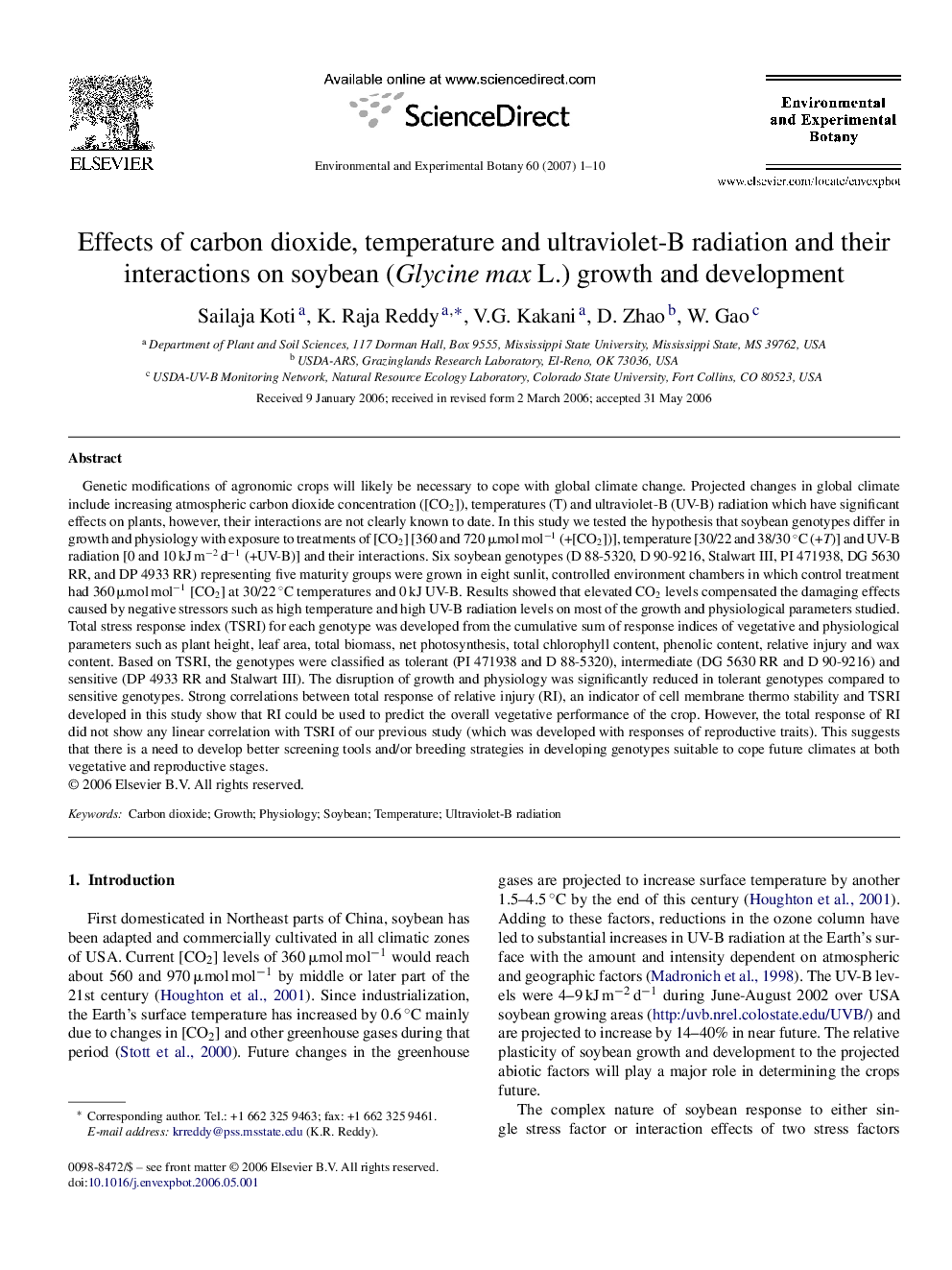| کد مقاله | کد نشریه | سال انتشار | مقاله انگلیسی | نسخه تمام متن |
|---|---|---|---|---|
| 4555617 | 1329270 | 2007 | 10 صفحه PDF | دانلود رایگان |

Genetic modifications of agronomic crops will likely be necessary to cope with global climate change. Projected changes in global climate include increasing atmospheric carbon dioxide concentration ([CO2]), temperatures (T) and ultraviolet-B (UV-B) radiation which have significant effects on plants, however, their interactions are not clearly known to date. In this study we tested the hypothesis that soybean genotypes differ in growth and physiology with exposure to treatments of [CO2] [360 and 720 μmol mol−1 (+[CO2])], temperature [30/22 and 38/30 °C (+T)] and UV-B radiation [0 and 10 kJ m−2 d−1 (+UV-B)] and their interactions. Six soybean genotypes (D 88-5320, D 90-9216, Stalwart III, PI 471938, DG 5630 RR, and DP 4933 RR) representing five maturity groups were grown in eight sunlit, controlled environment chambers in which control treatment had 360 μmol mol−1 [CO2] at 30/22 °C temperatures and 0 kJ UV-B. Results showed that elevated CO2 levels compensated the damaging effects caused by negative stressors such as high temperature and high UV-B radiation levels on most of the growth and physiological parameters studied. Total stress response index (TSRI) for each genotype was developed from the cumulative sum of response indices of vegetative and physiological parameters such as plant height, leaf area, total biomass, net photosynthesis, total chlorophyll content, phenolic content, relative injury and wax content. Based on TSRI, the genotypes were classified as tolerant (PI 471938 and D 88-5320), intermediate (DG 5630 RR and D 90-9216) and sensitive (DP 4933 RR and Stalwart III). The disruption of growth and physiology was significantly reduced in tolerant genotypes compared to sensitive genotypes. Strong correlations between total response of relative injury (RI), an indicator of cell membrane thermo stability and TSRI developed in this study show that RI could be used to predict the overall vegetative performance of the crop. However, the total response of RI did not show any linear correlation with TSRI of our previous study (which was developed with responses of reproductive traits). This suggests that there is a need to develop better screening tools and/or breeding strategies in developing genotypes suitable to cope future climates at both vegetative and reproductive stages.
Journal: Environmental and Experimental Botany - Volume 60, Issue 1, May 2007, Pages 1–10